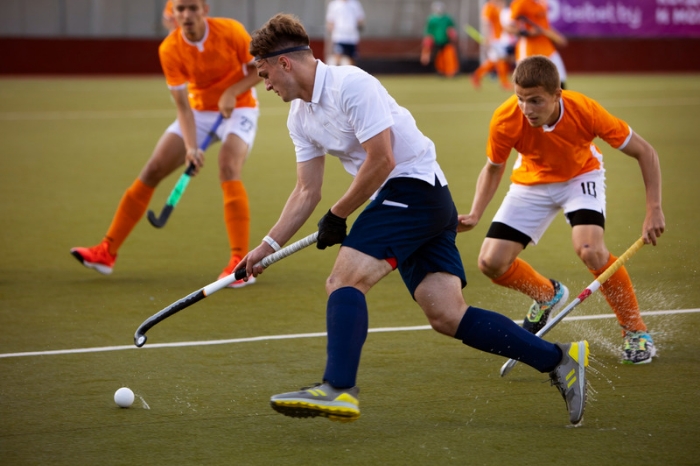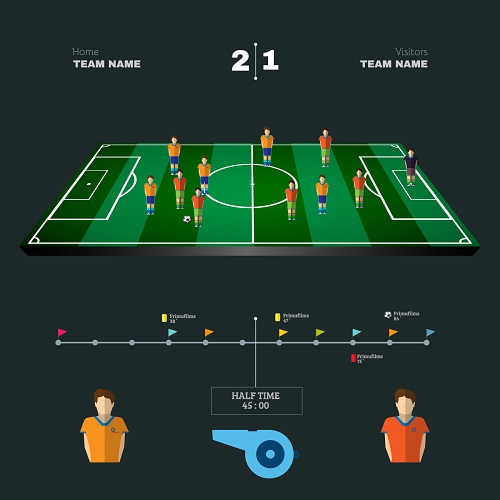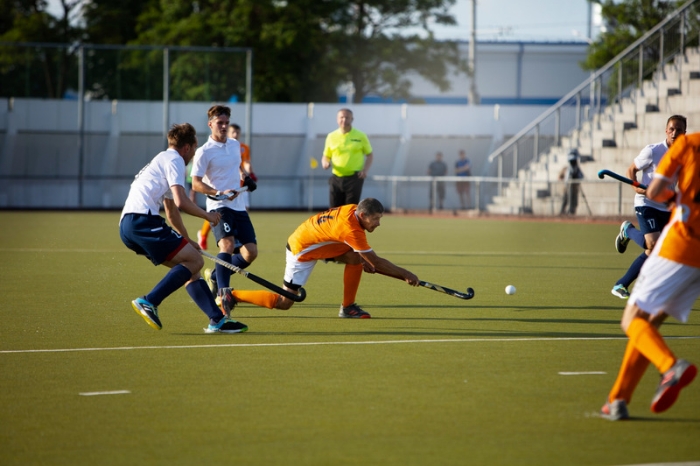How many Periods in a Hockey Game?

Captivating the passions of participants and spectators on a global scale, field hockey stands as an exhilarating and ever-evolving collective endeavor. Its rapid tempo and cerebral approach render it an engaging spectacle for both active participants and passive observers. To gain a comprehensive comprehension of the field hockey domain, it is crucial to assimilate knowledge regarding the number and duration of its key components. Delving into the multifaceted nature of field hockey, this composition will explore the concept of periods and their time frames, while investigating their impact on the holistic flux of the game.
The Basics of a Field Hockey Game:

Let us first establish a firm understanding of the sport before exploring its game length. Field hockey is conducted on a rectangular arena with objectives situated at respective extremities. Eleven players make up each team, with an added emphasis on the net-minding position. The central focus of the game is to effectively shoot the ball into the opponent’s goal employing a bent stick.
The match starts off with a toss, and the successful squad gets to select their desired location on the field. The team that gains control of the ball is designated as the aggressor, while the opposite group is labelled as the protector. Teams vie for dominance and point through an interplay of skill, cunning, and collective effort.
Periods in Field Hockey:
A field hockey game is split into two equal portions called “periods” or “halves.” This division permits players to have intermissions, form strategies, and regain strength during the match. The main purpose of breaking the game into periods is to ensure fairness and balance while enabling players to perform at their full potential throughout the entire competition.
Each period presents an opportunity for coaches to offer guidance, make tactical adjustments, and inspire their teams. Furthermore, the break between periods allows players to rehydrate and receive medical attention if required. Additionally, halftime provides a chance for athletes to recuperate and regroup before continuing their endeavors on the field.
Duration of Periods:

The length of periods in a game of field hockey can differ based on the level of play and the specific competition rules. In international matches, standard field hockey games are made up of two halves, each lasting for 35 minutes. The intermission that takes place between these two halves typically spans around 10 minutes.
However, at lower levels such as school, college, or club matches, the duration of each half might not adhere strictly to the international standard. Some instances see each half shortened to either 30 minutes, 25 minutes, or even going down to just 20 minutes. Despite this deviation in match length, the halftime break remains consistently around 10 minutes.
It’s crucial to recognize that these variations in game duration usually serve purposes like accommodating different age groups, fitness levels, and tournament formats. For example, junior or youth matches may opt for shorter periods with player safety and enjoyment prioritized above all else.
Time Management in Field Hockey:
Managing time in field hockey is extremely important due to the continuous running clock during matches. Unlike sports with frequent breaks, field hockey maintains a constant flow, making it fast-paced and full of energy.
Throughout the game, the clock only stops for specific occurrences like penalty corners, penalty strokes, injuries, and substitutions. The umpires are responsible for controlling these interruptions and adding the time taken for these events to the overall playing time. This ensures that the actual playing time stays relatively close to the designated duration, even with occasional stoppages.
Impact on Game Strategies:

The division of field hockey matches into two halves has a significant impact on team strategies and player performance. Coaches must carefully consider how to balance offensive and defensive play, taking into account the break between halves.
During the first half, teams focus on establishing their presence on the field, creating scoring opportunities, and exploiting their opponent’s weaknesses. The halftime break allows coaches to provide feedback, identify areas that need improvement, and make tactical adjustments based on their observations.
The second half of a field hockey game is characterized by increased intensity as teams strive to secure a victory or make a comeback. Physical endurance and mental strength become crucial during this phase. Teams may modify their formations, make substitutions, and implement specific game plans to gain an edge over their opponents.
Overtime and Penalty Shootouts:
In certain instances, an extended period may be required in a field hockey match, surpassing the typical two halves. This situation arises when the score is equal at the conclusion of regular playtime. In these scenarios, additional timeframes, known as overtime periods, are implemented to ascertain the victor.
Overtime periods usually maintain a briefer duration, typically spanning 7.5 to 10 minutes each. Should the score remain equal following the conclusion of the overtime periods, a penalty shootout is employed to establish the triumphant team. During a penalty shootout, five players from each team take turns endeavoring to score against the opposing goalkeeper.
The team that accumulates the highest number of goals at the culmination of the penalty shootout is proclaimed the winner. If the shootout remains tied after the initial five attempts, a sudden-death arrangement is adopted. In this format, one team scores while the other fails to do so, repeatedly, until a victor is ultimately determined.
Conclusion:
Grasping the notion of intervals in a field hockey match is pivotal in understanding the rhythm and organization of this captivating endeavor. With two distinct segments of varying lengths, athletes are afforded the opportunity to exhibit their abilities. And showcase their strategic acumen, and showcase their physical stamina.
The partitioning of the game into intervals grants coaches invaluable moments to provide guidance and make tactical adaptations. While players can seize the chance to rest and regroup before resuming their relentless pursuit of triumph on the pitch. The dynamic essence of field hockey, coupled with its interval-based framework. It continues to enthral spectators across the globe and solidifies its position as one of the most exhilarating and enduring team sports.
FAQ
Hockey typically has three periods. Each period lasts around 20 minutes, depending on the level of play and specific league rules. In some variations of the sport, such as youth or amateur games, you might come across games with four periods, but this is less common. Most professional and international hockey games are played in three periods.
Hockey is typically divided into three periods. These periods are distinct segments of the game, each lasting a set amount of time, which is usually around 20 minutes at the professional level. However, the exact duration of periods can vary depending on the level of play and specific league rules. While there are variations of hockey that use four periods, especially in youth or amateur games, the standard format for most professional and international hockey matches involves three periods. These three periods provide the structure for the game, allowing teams to compete and strategize over the course of regulation play.
No, there is typically no 4th period in hockey. Hockey games are traditionally divided into three periods. Each period has a set duration, usually around 20 minutes, depending on the level of play and specific league rules. While some variations, especially in youth or amateur games, might use four periods, the standard format for most professional and international hockey matches remains three periods. These three periods make up the regular game time, followed by potential overtime periods or shootouts in case of ties, but they are not considered the 4th period.
Hockey adopted the three-period format as a way to structure the game efficiently. It was influenced by other stick-and-ball sports with halves or periods and provided a balanced approach for players and spectators. This tradition has persisted over time, making three periods the standard in professional and international hockey.
You May Also Like – How Long Are Hockey Intermissions?

I’m James Ritter, a sports enthusiast. I’ve played sports since school, and now I enjoy writing about them. My goal is to inspire aspiring athletes through stories of success and determination. I believe anyone can achieve greatness with the right guidance. I aim to make a positive impact on the sports community by sharing stories and insights, connecting my love for sports and writing. Join me on this journey of inspiration for all sports lovers.

